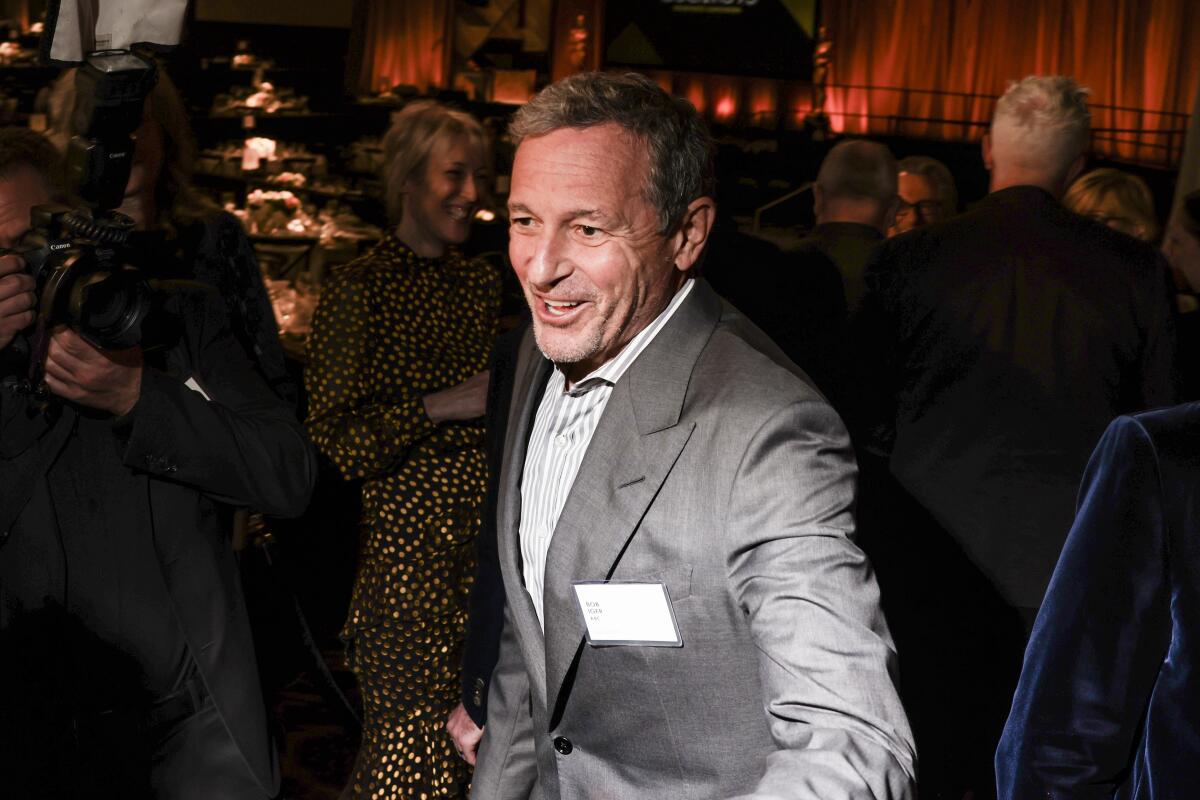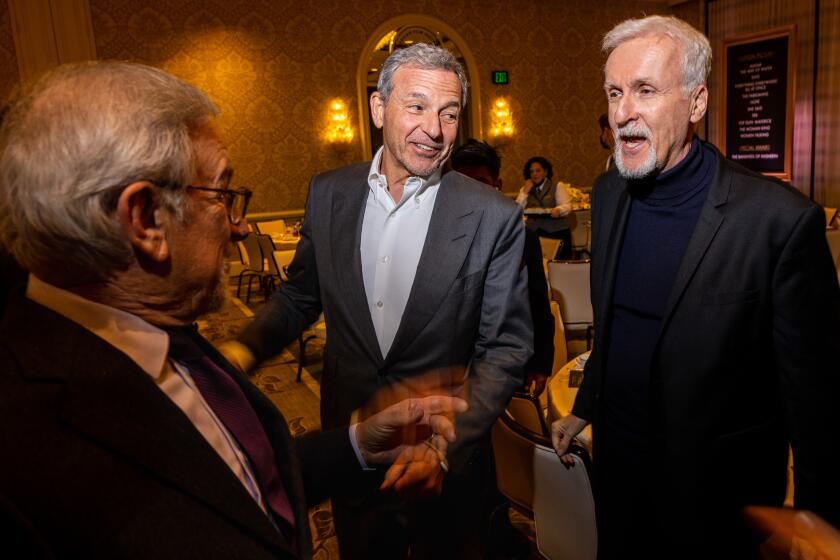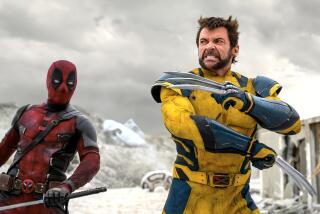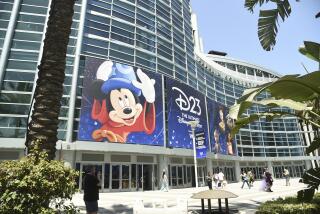Bob Iger admits Disney theme park pricing moves were ‘a little too aggressive’

- Share via
Walt Disney Co. Chief Executive Bob Iger acknowledges his company goofed on some of its pricing strategies.
Speaking at the Morgan Stanley Technology, Media and Telecom Conference on Thursday, Iger admitted that Disney’s pursuit of higher profits at its sprawling theme parks — and its initial bargain-basement subscription fee for streaming service Disney+ — had negative consequences for the Burbank entertainment giant.
In particular, price increases at Disney’s parks backfired because they made a day at Disneyland and Walt Disney World in Florida a less happy experience for visitors, including some of its most cherished fans.
“In our zeal to grow profits, we may have been a little bit too aggressive about some of our pricing,” Iger said. “I think there’s a way to continue to grow that business, but be smarter about how we price so that we maintain that brand value of accessibility.”
On Thursday, Iger — who returned to lead Disney as CEO in November after his handpicked successor, Bob Chapek, was ousted — pledged “to continue to listen to consumers,” adding, “we’re going to continue to adjust.”
Since Iger returned, Disney has scaled back some of its price enhancements at the parks, reorganized the company and announced a plan to find $5.5 billion in cost savings, which will include the elimination of 7,000 jobs.
The company is taking a hard look at whether it should hold on to its general entertainment service, Hulu, and even its sports empire, ESPN. Rising sports-rights fees and dwindling cable TV subscriptions have made ESPN less profitable.
Iger has said “everything is on the table” with regard to Hulu. He has also said there are no conversations about selling or spinning off ESPN. On Thursday, he said the company has an “open mind” about ESPN’s future but remains bullish.
The earnings report came as Walt Disney Co. faces a challenge from an outsider, billionaire investor Nelson Peltz, who is seeking election to join the board.
Park strategies, in particular, have come under the microscope.
“One of the things that we had to do was we had to improve the guest experience by reducing crowding,” Iger said. “It’s tempting to let more and more people in, but if the guest satisfaction levels are going down because of crowding then that doesn’t work. We have to figure out how we reduce crowding but maintain our profitability. And we did that well.”
In January, the company reinstated free overnight self-parking for guests at its hotels at Walt Disney World. In recent years, Disney had been charging visitors nightly per-vehicle fees for parking. Also, the company expanded the number of days at Disneyland in Anaheim when adult tickets are offered at $104, the lowest price option.
These changes came after years of complaints by fans that Disney had been nickel-and-diming its guests.
Consumers were irked by Disney’s pandemic-era reservation system, which curtailed many spontaneous visits.
Also among the changes that caused fan angst: the end of the longtime practice of including downloads of digital photos of families snapped around Disney World in the cost of an annual pass. Photo downloads were instead offered as an add-on with an additional fee. Starting this month, Disney World guests who pay for the Genie+ service will get attraction photos for no additional charge. At Disneyland, free photo downloads are now offered as part of a general admission ticket.
But Disney executives now concede that the prices of some products were too low, particularly in the closely watched streaming sector.
Disney went to market with Disney+ in November 2019 with a $6.99-a-month subscription fee, which helped the service quickly attract millions of subscribers in its quest to rival Netflix. But the service has lost billions of dollars for the company. Now Disney charges $10.99 a month for an ad-free version of the service.
“One of the key things that we have to figure out is a pricing strategy that makes sense,” Iger said. “In our zeal to grow global subs[cribers], I think we were off in terms of that pricing strategy. And we’re now starting to learn more about it and to adjust accordingly.”
Disney raised the fee by nearly $3 a month because the company has been losing billions of dollars a year on its streaming ventures. In the most recent quarter, Disney’s direct-to-consumer segment lost $1.1 billion. The company also launched an ad-supported tier of Disney+ for $7.99 a month.
The pricing change comes as Disney+ continues to grow at a steady clip. However, Wall Street has become less forgiving of media companies that lose huge sums on streaming.
Last fall, Disney also raised the price of Hulu, which the company controls. (Comcast owns a 33% stake in the popular streaming service.)
Disney has an agreement in place that could lead to Disney buying out Comcast’s stake by January.
The looming deadline and Disney’s efforts to shave billions of dollars in costs have prompted some in Hollywood to speculate about whether Disney might end up selling Hulu to Comcast or some other entity. Iger suggested Thursday that Disney hasn’t figured out whether to keep Hulu, which has been a potent platform for originals, such as “The Dropout” and “The Handmaid’s Tale,” as well as ABC and FX shows. Iger called Hulu “a solid platform.”
“We’re really studying the business very, very carefully,” Iger said. “It’s a very attractive platform for advertisers. And advertising has proven to be valuable for us. But the environment is very, very tricky right now.”
Iger said the company would hold off on any decisions about Hulu until it has a better grasp of how the streaming wars will shake out, and where Hulu fits in that.
Disney’s chief had relinquished his CEO role in February 2020, making way for Chapek. Iger then retired from the company at the end of 2021. In the three months since his return, he has focused on some of the company’s excesses.
For example, Disney has greenlighted dozens of streaming shows with a goal of building a robust catalog to entice customers to sign up for Disney+ and Hulu. However, the industry is relearning that quality over quantity is the key to subscription growth and retention. Disney will continue to build its pipeline of programming, in part because the company has already made commitments to producers, but Disney now intends to “better rationalize our costs,” Iger said.
Iger also noted that sequels of big franchise movies, such as those from “Star Wars” and the Marvel Cinematic Universe, will be scrutinized. He acknowledged Disney’s studio might have rushed out too many “Star Wars” films.
The company doesn’t want to risk wearing out its valuable intellectual properties.
“Marvel has 7,000 characters, so there are a lot more stories to tell,” Iger said. “What we have to look at at Marvel is not necessarily the volume of Marvel storytelling but how many times do we go back to the well on certain characters? Sequels typically work well for us, but do you need a third and a fourth [installment], for instance? Or is it time to turn to other characters?”
More to Read
Inside the business of entertainment
The Wide Shot brings you news, analysis and insights on everything from streaming wars to production — and what it all means for the future.
You may occasionally receive promotional content from the Los Angeles Times.












